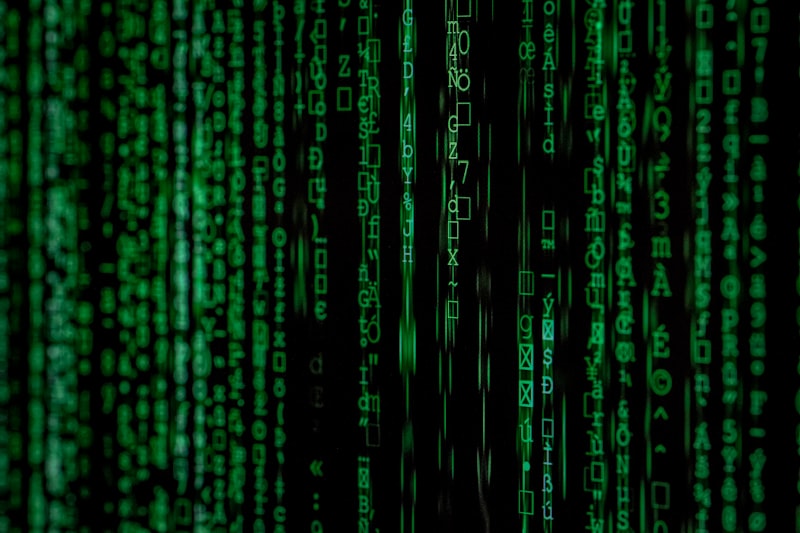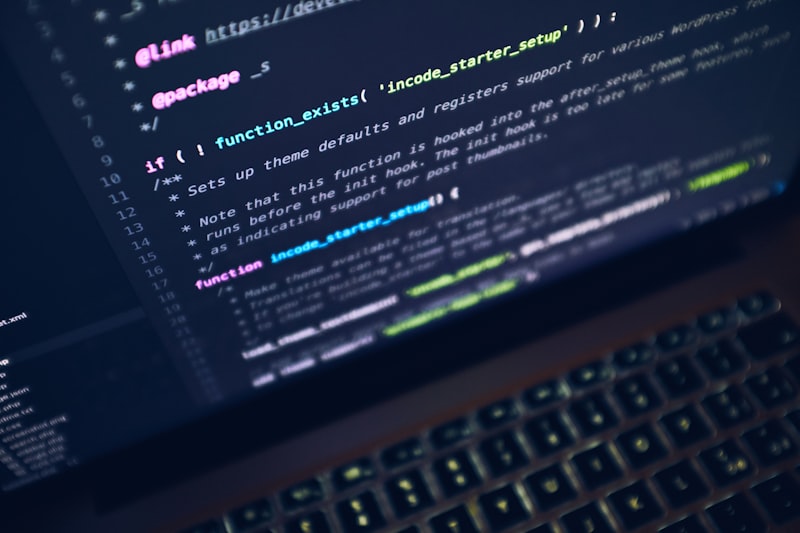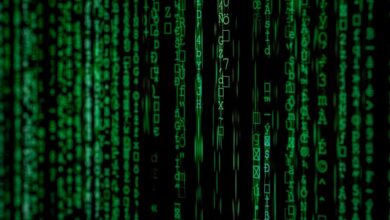Educational Technologies and Distance Education Platforms

In today’s ever-evolving digital landscape, educational technologies and distance education platforms have emerged as game-changers in the field of education. With their ability to transcend physical boundaries and provide access to quality learning experiences, these tools are reshaping the way we acquire knowledge. Let’s delve into the fascinating world of educational technologies and distance education platforms, exploring how they are revolutionizing the educational landscape.
When it comes to educational technologies, innovation is the name of the game. From interactive whiteboards to immersive virtual reality (VR) experiences, these technologies offer a rich and engaging learning environment for students of all ages. Imagine the excitement of exploring ancient civilizations through VR simulations or conducting complex scientific experiments using augmented reality (AR). These technologies not only captivate students’ interest but also enhance their understanding by making abstract concepts come alive.


Distance education platforms have played a pivotal role in democratizing education. With the rise of online learning, geographical barriers are no longer a limiting factor. Students from different corners of the world can connect with renowned educators and access high-quality educational resources at their own pace. This flexibility empowers individuals who may have otherwise been unable to pursue traditional education due to various constraints. Whether it’s working professionals seeking career advancement or individuals living in remote areas, distance education platforms provide equal opportunities for all.
But what makes these platforms truly remarkable is their adaptability. With personalized learning becoming increasingly important, educational technologies and distance education platforms offer tailored approaches to cater to individual needs. Adaptive assessments and intelligent algorithms enable educators to identify students’ strengths and weaknesses, allowing for targeted interventions. This individualized approach ensures that learners receive the support they need, fostering a more effective and efficient learning process.
Moreover, the learner-centric nature of these platforms encourages active participation and collaboration. Students can engage in discussions, collaborate on projects, and receive instant feedback, ensuring a dynamic learning experience. The integration of social features within these platforms promotes a sense of community, where learners can connect with their peers and engage in meaningful interactions.
Educational technologies and distance education platforms have revolutionized the way we approach education. From immersive learning experiences to personalized approaches, these tools empower individuals by breaking down barriers and providing equal access to quality education. As we continue to embrace the possibilities offered by these technologies, the future of education is undoubtedly bright, promising a world where knowledge knows no boundaries.
Revolutionizing Education: How Educational Technologies are Transforming Learning in the Digital Age
Introduction:
Are you ready to embark on an educational revolution that will transform learning as we know it? In today’s digital age, educational technologies have taken center stage, reshaping the way we acquire knowledge and skills. This article explores the incredible impact of these advancements on education, from personalized learning experiences to enhanced collaboration and global connectivity. Join us as we delve into the exciting world of educational technologies and their potential to revolutionize education.
The Power of Personalized Learning:
Imagine a classroom where every student receives tailored instruction based on their unique strengths and needs. With educational technologies, this vision becomes a reality. Adaptive learning platforms leverage artificial intelligence algorithms to provide personalized learning paths for students. Through interactive exercises and real-time feedback, learners can progress at their own pace, ensuring mastery of key concepts. This individualized approach empowers students to take ownership of their learning journey and fosters a deeper understanding of the subject matter.
Enhancing Collaboration and Engagement:
Gone are the days of solitary textbook reading and passive note-taking. Educational technologies promote active engagement and collaboration among students. Virtual classrooms enable seamless communication and teamwork, transcending geographical boundaries. Online discussion boards and video conferencing tools facilitate lively debates, idea sharing, and peer-to-peer learning. By embracing these technologies, students develop vital 21st-century skills such as communication, critical thinking, and collaboration, preparing them for the challenges of the modern workforce.

Unlocking Global Connectivity:
In today’s interconnected world, education knows no borders. Educational technologies break down geographical barriers, connecting students and educators from around the globe. Online platforms offer opportunities for cross-cultural exchange, enabling students to gain a deeper appreciation of diverse perspectives. Virtual field trips bring historical landmarks, scientific wonders, and cultural treasures to life, enriching the learning experience. Through these global connections, students develop a global mindset, fostering empathy and understanding across different cultures and societies.
The Future of Education:
As we embrace the digital age, educational technologies hold the key to unlocking a future of limitless possibilities. From virtual reality simulations to augmented reality textbooks, these innovations continue to push the boundaries of traditional education. By harnessing the potential of educational technologies, we can create inclusive, accessible, and engaging learning environments that cater to every learner’s needs.
Conclusion:
Educational technologies are revolutionizing the way we learn, transforming education into an immersive and personalized experience. With personalized learning, enhanced collaboration, and global connectivity, students are empowered to reach their full potential in the digital age. As we navigate the educational landscape of tomorrow, let us embrace these transformative technologies and pave the way for a brighter future of learning.
Breaking Barriers: Distance Education Platforms Empower Learners Worldwide
Imagine a world where geography is no longer a barrier to education. A world where learners from all corners of the globe can access quality education without the limitations of physical distance. This is the power of distance education platforms, revolutionizing learning and empowering individuals worldwide.
In today’s fast-paced digital age, traditional classrooms are no longer the only option for gaining knowledge. Distance education platforms have emerged as game-changers, opening up a world of opportunities for learners everywhere. These platforms leverage technology to bridge the gap between students and educators, breaking down the barriers that once confined learning within the walls of a physical classroom.
One of the key advantages of distance education platforms is their accessibility. Learners no longer need to relocate or travel long distances to attend prestigious institutions. With just a stable internet connection, they can access courses and educational resources from the comfort of their own homes. This not only saves time and money but also democratizes education, making it available to those who may have previously been excluded due to geographical constraints.
Moreover, distance education platforms offer a flexible learning experience. Traditional classrooms often follow rigid schedules, leaving little room for individual needs and preferences. In contrast, these online platforms allow learners to create personalized study plans, accommodating their unique circumstances. Whether you’re a working professional, a busy parent, or someone with limited mobility, distance education platforms provide the flexibility to learn at your own pace and on your own terms.
Additionally, distance education platforms foster a sense of global community. Through online discussion forums and collaborative projects, learners from diverse backgrounds can connect and engage with one another. This multicultural exchange of ideas enhances the learning experience, exposing individuals to different perspectives and expanding their horizons. It breaks down cultural barriers and fosters a sense of belonging in a global learning community.
Distance education platforms have transformed the educational landscape by breaking barriers and empowering learners worldwide. By harnessing the potential of technology, these platforms offer accessibility, flexibility, and a sense of community to individuals seeking knowledge. The power to learn knows no bounds, and with distance education platforms, anyone, regardless of their location, can embark on an educational journey that was once unimaginable. So let’s embrace this digital revolution and unlock the doors to learning for all.
From Classroom to Cyberspace: Exploring the Rise of Online Learning
Are you tired of the traditional classroom setting? Do you crave flexibility and convenience in your pursuit of knowledge? If so, you’re not alone. The rise of online learning has revolutionized education, bringing a plethora of opportunities right to your fingertips. In this article, we will delve into the details of online learning, its benefits, and its impact on our educational landscape.
Online learning, also known as e-learning, refers to the process of acquiring knowledge and skills through digital platforms, rather than in a physical classroom. With just a computer or mobile device and an internet connection, anyone can access a world of educational resources, courses, and programs tailored to their needs. From academic subjects to professional development, the possibilities are endless.
One of the most significant advantages of online learning is its flexibility. Unlike traditional classrooms, you have the freedom to learn at your own pace and schedule. Whether you’re a working professional, a stay-at-home parent, or a busy student, online learning allows you to design your own learning journey. You can study whenever and wherever it suits you, eliminating the constraints of time and location.
Moreover, online learning offers a wide range of courses from renowned institutions and experts worldwide. Regardless of your interests or goals, you can find a course that aligns perfectly with your aspirations. Want to learn coding, photography, or even astrophysics? There’s a virtual class waiting for you. This accessibility breaks down barriers and empowers individuals from diverse backgrounds to acquire knowledge and upgrade their skills.
Another compelling aspect of online learning is the interactive and engaging learning experience it provides. Through innovative technologies, such as video lectures, discussion boards, and virtual simulations, learners can actively participate and collaborate with peers and instructors. This fosters a sense of community and creates a dynamic environment where knowledge is shared and absorbed more effectively.
Furthermore, online learning is often more cost-effective than traditional education. With reduced or no commuting expenses, accommodation costs, or textbook fees, learners can save a considerable amount of money. It’s an affordable alternative that ensures quality education without breaking the bank.
Online learning has emerged as a transformative force in the educational realm. Its flexibility, accessibility, interactivity, and affordability make it an attractive option for individuals seeking to expand their horizons and acquire new skills. Whether you’re a lifelong learner or someone looking to enhance your professional prospects, the digital landscape of online learning opens up a world of possibilities, taking education from the confines of the classroom to the vast expanse of cyberspace.
The Future of Education: Unleashing the Power of Educational Technologies
In today’s rapidly evolving world, education stands at the forefront of transformation. As we look ahead to the future, the potential of educational technologies to revolutionize learning experiences is awe-inspiring. With each passing day, these technologies are becoming an integral part of classrooms, bridging gaps, expanding opportunities, and unlocking new horizons for both students and educators alike.

At the heart of this educational revolution lies the power of digital tools and platforms. With the advent of immersive virtual reality (VR) and augmented reality (AR), students can now embark on virtual expeditions, exploring ancient civilizations or even venturing into the depths of space, all from the confines of their classrooms. These technologies bring subjects to life, captivating young minds and fostering a deeper understanding of complex concepts.
Additionally, artificial intelligence (AI) has emerged as a game-changer in personalized learning. AI-powered adaptive learning systems analyze individual learners’ strengths and weaknesses, tailoring content and pacing to meet their specific needs. This approach ensures that students receive targeted support and progress at their own pace, ultimately enhancing their educational journey.
The rise of online learning platforms and Massive Open Online Courses (MOOCs) has democratized education like never before. Now, anyone with an internet connection can access high-quality educational resources from renowned institutions and experts worldwide. These platforms offer flexibility, allowing individuals to learn at their convenience and pace, breaking free from the constraints of traditional classroom settings.

Moreover, collaboration and communication have seen a remarkable transformation through educational technologies. Virtual classrooms, video conferencing tools, and online collaboration platforms enable students and educators to connect and collaborate beyond physical boundaries. Students can engage in lively discussions, share ideas, and work together on projects, fostering a sense of belonging and community despite being physically distant.
As we embrace the future, it is crucial to recognize that technology alone cannot replace the invaluable role of teachers. Educators remain the guiding force, leveraging technology to create rich learning experiences and nurturing critical thinking, creativity, and problem-solving skills. The future of education lies in striking a harmonious balance between human expertise and technological advancements.
The future of education is unfolding before our eyes, driven by the transformative power of educational technologies. VR, AR, AI, online learning platforms, and collaborative tools are reshaping classrooms, empowering learners, and redefining the possibilities of knowledge acquisition. By harnessing these tools effectively, we can pave the way for a future where education knows no bounds, where every individual has access to quality education, and where the joy of learning becomes a lifelong pursuit.




